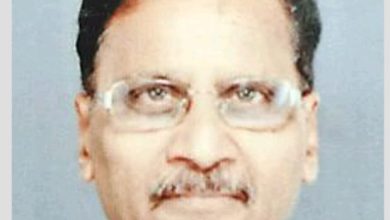Celebrations and Introspection
AAP's National Party Status

Yash pal Ralhan
The Aam Aadmi Party (AAP) has recently been granted the status of a national party by the Election Commission, which is a remarkable achievement for the relatively young political party. This recognition brings several benefits to the party, including a reserved symbol, additional airtime during election campaigns, and a higher number of star campaigners. The AAP’s success in ruling over two states and gaining momentum in other states has helped it achieve this recognition. However, the party still faces many hurdles before it can become a credible national alternative. One major issue is that the party is too closely identified with one leader, Arvind Kejriwal, which may hinder its ability to expand its presence in other states. Additionally, the AAP needs to establish a more robust presence in states where it wishes to make a mark by enlisting local leaders of substance. This is crucial for the party to be seen as different from other political parties. Furthermore, there are concerns that the AAP’s governance in Punjab is being run on Delhi’s instructions, which contradicts the objective of decentralization of power that the party should be striving for. Therefore, the recognition as a national party must be a time for introspection, not just celebration. The party needs to reevaluate its role and objectives if it wishes to become a part of the national opposition or an alternative to all existing national political parties. The AAP has lost its tag of being a different political party as it chose a candidate for a parliamentary bye-election who had been in the Congress party just a day before. This move may have damaged the party’s credibility and given rise to questions about its commitment to its founding principles. Kejriwal’s old habit of making false claims has also hurt the party’s image. Recently, he raised the unnecessary issue of Prime Minister Modi’s education, which was not well-received by the public. Such actions distract from the party’s main agenda and diminish its credibility. Despite these challenges, the AAP is likely to win the next assembly elections in Punjab and Delhi. The party has a significant cushion margin of victory, with 92 seats in Delhi and 59 seats in Punjab. However, the party must be cautious not to become complacent and continue to work towards expanding its reach and establishing itself as a credible national alternative. The worst loser in the recent shakeup is the Communist Party of India (CPI), which has lost its status as a national party since 1951. The party’s failure to adapt to changing times and connect with younger voters has contributed to its decline. The AAP, on the other hand, has successfully connected with young voters and capitalized on their dissatisfaction with the existing political establishment.AAP’s recognition as a national party is a significant achievement, but it must use this as an opportunity for introspection and self-evaluation. The party needs to reevaluate its objectives, expand its reach, and establish a more robust presence in states where it wishes to make a mark. If it can do so, the AAP has the potential to become a credible national alternative and a force to be reckoned with in Indian politics.






